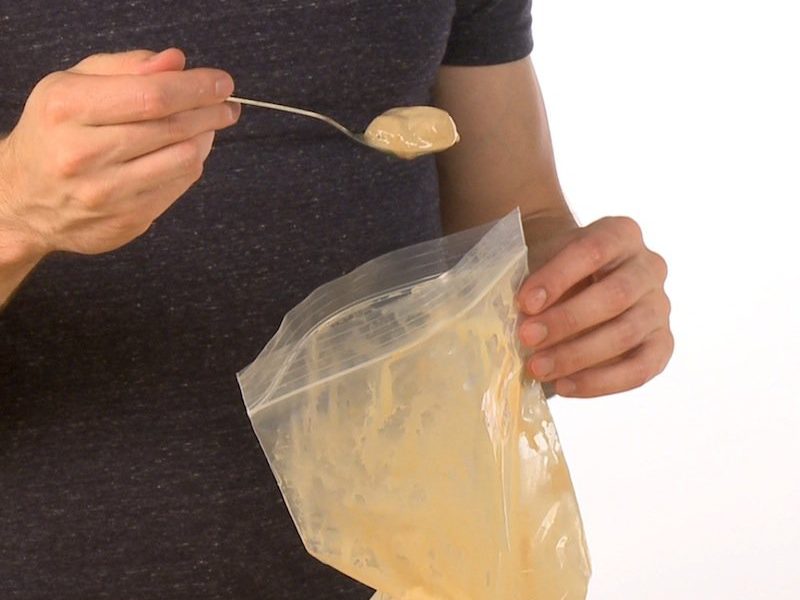Food always tastes better when it’s homemade, and the same is true for ice cream. We went out and got some brown sugar from Imperial Sugar and Dixie Crystals to concoct a tasty ice cream creation. You can make your own ice cream, too! With the easy-to-follow steps below, you’ll have Brown Sugar Homemade Ice Cream in less than 30 minutes!
Brown Sugar Homemade Ice Cream
Make your own ice cream right at home with Imperial Sugar and Dixie Crystals. It's Brown Sugar Homemade Ice Cream!

Here's What You'll Need
-
Light brown sugar(we had our best results with Imperial Sugar and Dixie Crystals)
-
2 zipper-lock bags
-
Measuring utensils
-
Large empty container with a lid
-
Ice
-
Rock salt
-
Vanilla extract
-
Half and half
-
Adult supervision
Experiment
-
Fill the large container about half full with crushed ice and add about 6 tablespoons of rock salt to the ice. Seal the plastic jar and shake the ice and salt for about five minutes.
*You may need to wear your gloves when you’re handling the jar. If you’re curious as to why you have to wear gloves, measure the temperature of the mixture with a thermometer. The rock salt and ice mixture gets down to about 14º F (-10º C) - Use a 1 quart-sized, zipper-lock bag to mix the following ingredients: 1/2-cup of Half & Half, 1/2 tablespoon brown sugar, 1 teaspoon vanilla extract (optional for flavor).
- Seal the bag tightly, allowing as little air to remain in the bag as possible. (Too much air left inside may force the bag open during shaking.) Place the sealed bag inside the other quart-sized bag, again leaving as little air inside as possible and sealing well. By double-bagging, the risk of salt and ice leaking into the ice cream is minimized.
- Place the two bags inside the container with the ice and seal the container.
- Shake, rock, roll, and mix that can! Your ice cream should be ready after about 15-20 minutes. Once mixed, remove the inner bags from the jar and rinse them well with water. You don’t want any salt water accidentally getting into your ice cream.
How Does It Work?
Just like we use salt on icy roads in the winter, salt mixed with ice in this case also causes the ice to melt. When salt comes into contact with ice, the freezing point of the ice is lowered. The lowering of the freezing point depends on the amount of salt added. The more salt added, the lower the temperature will be before the salt-water solution freezes. For example, water will normally freeze at 32º F. A 10% salt solution freezes at 20º F, and a 20% solution freezes at 2º F.
When salt is added to the ice (or snow), some of the ice melts because the freezing point is lowered. Always remember that heat must be absorbed by the ice for it to melt. The heat that causes the melting comes from the surroundings (the warmer cream mixture). By lowering the temperature at which ice is frozen, you were able to create an environment in which the cream mixture could freeze at a temperature below 32º F into ice cream.
Did You Know? In 1846, Nancy Johnson invented the hand-cranked ice cream churn and ice cream surged in popularity. Then, in 1904, ice cream cones were invented at the St. Louis World Exposition. An ice cream vendor ran out of dishes and improvised by rolling up some waffles to make cones.
